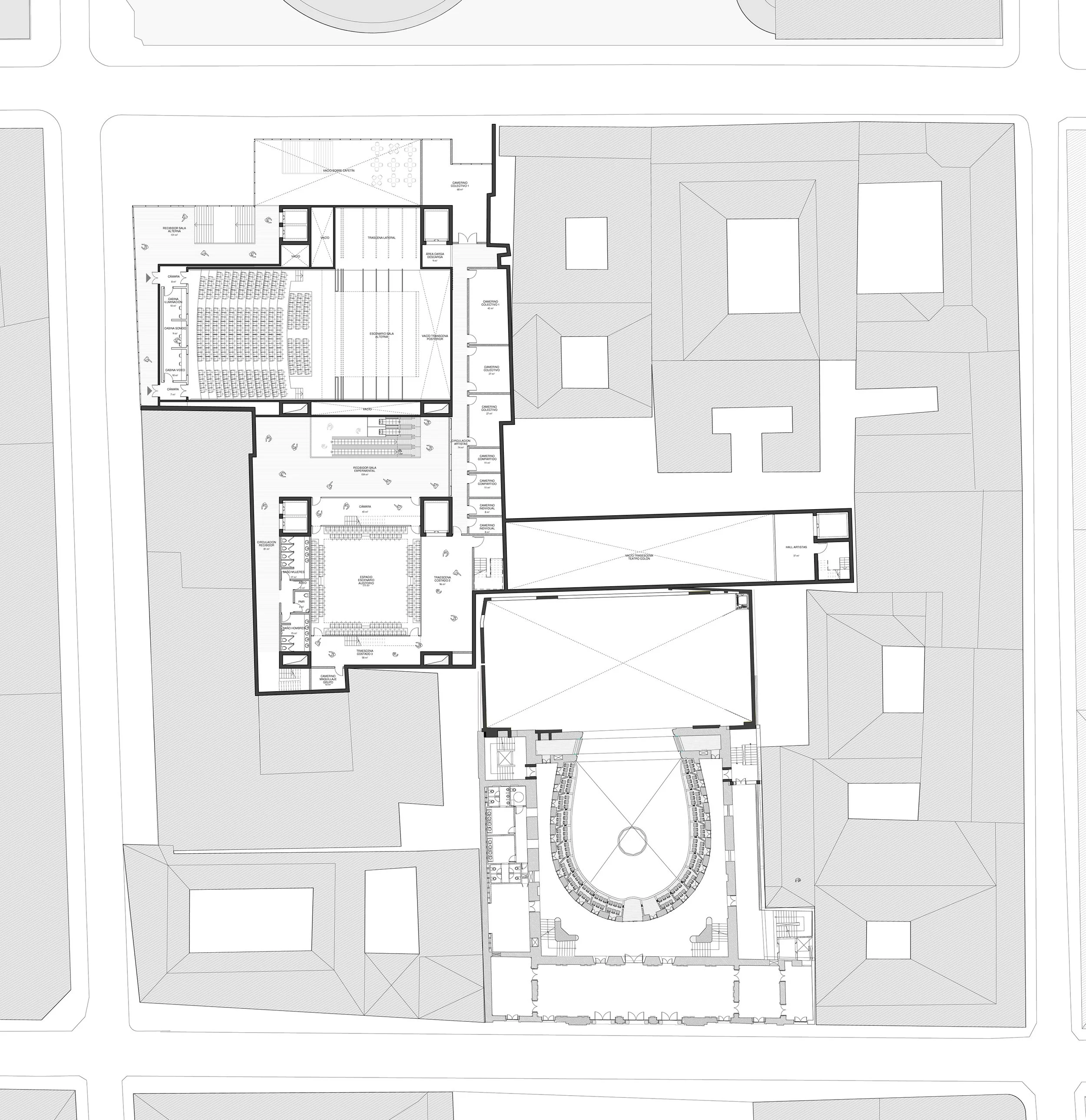teatro colón
Extension of a theater into the public space.
Bogota, Colombia.
2013
/// Colón Theater Extension.
Project: adjkm + Contexto Urbano ///. Caracas Team: Alejandro Méndez, Daniel Otero, Javier Mogollón, Khristian Ceballos, and Mawarí Núñez ///. Bogota Team: Andrés Ortiz and Mario Ceballos ///. Collaborators: Samantha Pieters, Silvia Caradonna, Mariana Lugo, Fernando Sánchez, Abel Piñate, Odelis Lozada, Johana Arias, and Ricardo Limongi ///. Theater Consultant: dUCKS scéno ///. Acoustics: Tomás Méndez ///. Client: Sociedad Colombiana de Arquitectos ///. Phase: International competition ///. Surface: 35000 m² /// Program: Alternative theater hall (1000 seats), experimental hall (200 seats), rehearsal room, dressing rooms, and technical spaces.


